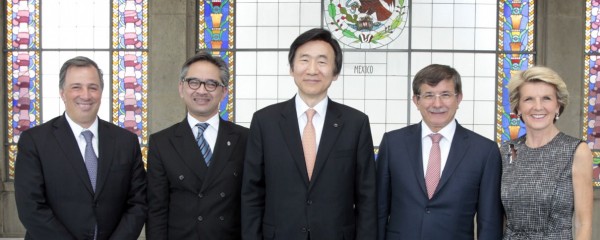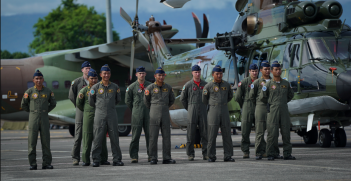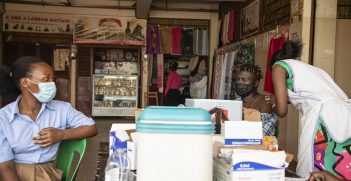Mixing with the MIKTAs

This week Australia participated in the second meeting of MIKTA, an informal grouping of Mexico, Indonesia, South Korea, Turkey and Australia. MIKTA emerged as a new vehicle for cooperation on the sidelines of the 68th session of the UN General Assembly.
Will it become middle powers’ answer to the BRICS?
This second gathering in Mexico City underscored the common interests and similarities of these five countries as democracies with open and resilient economies that promote free trade and investment. Perhaps immodestly, they self-describe as having the potential for high growth rates due to strong domestic markets, moderate inflation rates and populations with rising purchasing power.
While not determining any formal program or constitution, the Joint Communiqué identifies a number of areas for increased collective effort: aid effectiveness, the post-2015 development agenda, cyberspace security, climate change, human rights and migration, as well as the need for UN Security Council reform. The Ministers discussed the current international political situation, including Syria, Ukraine and the Korean Peninsula. They also agreed to enhance their dialogue on issues such as trade and development in international fora such as the United Nations and the G20.
Interestingly, the Ministers situated their meeting at what might be called a middle power moment: a time when “the gradual transformation of the international system opens a window of opportunity for their countries to further develop their constructive and conciliatory role in tackling pressing international issues.“
Middle power cooperation of this kind is not new for Australia: other examples include the Cairns Group of agriculture-exporting countries and the Australia Group to advocate control of chemical and biological weapons.
But this new network does not focus on one issue area but instead aims to increase the five states’ role in global governance, giving them greater clout in the international community. Arguably, coordination between these five states on matters of global importance might establish a “block of swing vote shareholders” or “swing states” in international fora.
In that sense, it is an exact analogue of the BRICS grouping.
As Alex Oliver has insightfully observed, debate about the ‘middle power’ label misses the point: MIKTA is about what its members will do rather than what they call themselves.
Despite being a constant in debates about Australia’s role in the world, there is no shared view on what the term ‘middle power’ means. It can be used either descriptively, focusing on the attributes of a state, or normatively, focusing on the way that such states do or should behave. Kim Nossal memorably termed this ‘middlepowerhood’ versus ‘middlepowermanship’. Andrew Carr has argued for ‘systemic impact’ as a better definition of middle powers as states that should “be able to shape parts of the international system, not the overlying structure, but at least refining specific parts it in ways that suit their interests.“ The MIKTA initiative fits well within this paradigm, whatever terminology is used.
Anthony Bergin argues cogently that Australia and the other MIKTA powers should not aim for modesty but for a ‘pivotal’ role. Rizal Sukma echoes this with his view that Indonesians perceive their country as a negara besar (big power) rather than a middle power.
MIKTA itself appears to not want to be weighed down by the ‘middle power’ label with the communiqué not mentioning the term. The Ministers describe MIKTA’s members as “strategically located“ and strongly linked to their surrounding regions.
To date MIKTA has received relatively little attention in Australia: as Alex Oliver notes, most debate has been on the utility of the ‘middle power’ label rather than the merits of the initiative. Australia had only modestly promoted MIKTA – with a mention in one of the Minister for Foreign Affairs’ speeches in South Korea and in the Department of Foreign Affairs and Trade’s Korea country brief. This seems likely to change as the grouping beds down. This week photos of the five MIKTAs striding with purpose were prominent in Minister Bishop’s social media.
Two more meetings of MIKTA are planned for this year: in September at the sidelines of the 69th session of the UN General Assembly and in Australia in November during the G20 leaders’ summit. South Korea will host in the first half of 2015 under an agreed formula for rotating the chairing role.
In commending the establishment of MIKTA, Scott Snyder noted that the BRICS grouping may be weightier but it is also more complex. Assertions of like-mindedness between MIKTA members ring much truer than for the BRICS: apart from Australia’s and Indonesia’s neighbourly disputes, there are relatively few issues between them.
Even though it is too early to predict whether MIKTA will endure in the alphabet soup of acronyms, the second meeting of the grouping suggests members’ willingness to pool efforts to become a more influential element in global governance. It is in each of their individual interests to widen their diplomatic aperture through working together.
The hope will be that MIKTA can fulfil its description by the five Ministers as a force for good that can fill an important gap in the international arena.
Melissa Conley Tyler is National Executive Director and Doris McDonald-Seaton is a research intern at the Australian Institute of International Affairs.





